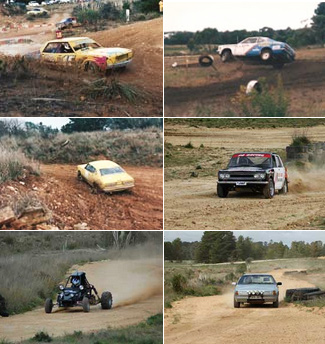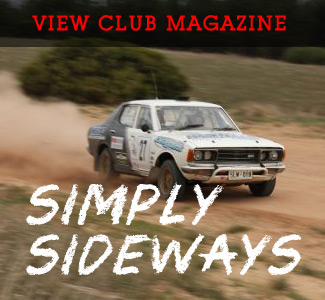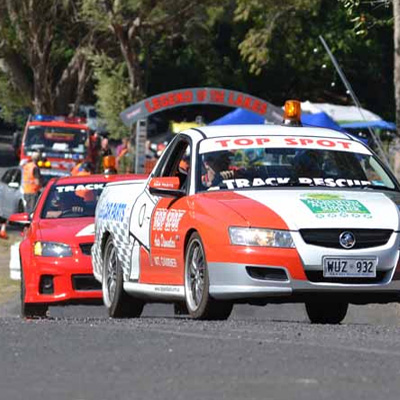The history of Rallying and Car trials began in earnest in the South East of South Australia in July 1954 when the South East Automobile Club (SEAC) was formed. This was the result of a meeting held on the 4th of June, 1954, when a group of 29 car enthusiasts met with a view of forming an automobile club. It was agreed by all present to form a club and several names were suggested before the existing name was chosen. Office bearers were then elected with Sid Chapman as inaugural President and T. Rhodes as secretary.
The first official meeting of SEAC was held on July 2nd 1954, the first Friday of the month and this tradition continued uninterrupted for over 50 years. At the second meeting there 34 members present, with approximately 10 of those being women. By the end of it's first year of operation, SEAC had expanded to over 120 members, including Alan Scott, Aub Shelton and many other notable men and women from the South East area.
The sport began in a variety of of formats designed to test the driving and navigational skills of competitors. Reliability Trials, Motorkhanas, Economy Runs and Hillclimbs were held as well as navigational events. The first navigational event was held in late August or early September of 1954, there were 51 entrants and trial ran from Mt Gambier to Naracoorte and back. The cars that were used at the time were basically stock standard road cars. There cars were usually driven to and from the events and served as a family car during the rest of the week. During the course of a normal trial, the kids were strapped into the back and a picnic lunch was thrown in the boot. The cars were not equipped with roll cages, nor in most cases seat belts and were usual driven at or above their limit on narrow cross ply tyres on standard wheels. Some even had the luxury of driving lights and or fog lamps.
The cars used were a variety of of makes available at the time including such notable makes as Morris Minors and Majors, Volkswagens, Austins, Ford Zephyrs, Consuls, V8 Customlines, Peugeots, Renaults, Humbers, Simcas, Hillmans and the early model Holdens to name a few.
The navigator only had the use of Service Station maps, paper, pencils and his or her intelligence to guide the driver in the right direction. There were no luxuries like Terratrips and marked up maps. Navigation, rather than speed was the main aim of these early trials as well as a variety of other obstacles and challenges which needed to be completed. Some of the challenges that the competitors faced included wheel changes, reaction tricks and average maintained speed sections.
Some of the other events that were run included all night trials to the Grampians and Calder Raceway and economy runs that produced exceptional fuel consumption including 42 M.P.G from a Holden in 1956.
SEAC was one of the first country automobile clubs to become affiliated with CAMS and acted as a host for the REDEX and the AMPOL Round Australia Trials of the fifties. As time progressed the club membership rose and fell, being as low as 10 in the mid seventies before gaining strength and numbers again in the late seventies and early eighties.
During the late seventies and early eighties the class of event known as the Rally began to take a higher level of priority in motor sport. This prominence was also reflected in the car trials and although navigation was still an important aspect of the events, speed and horsepower also came to the fore. In SEAC and other country clubs around the land, the type of Rally Car known as "Group G" emerged as the dominating vehicle for the top crews. These cars were usually highly modified road registered vehicles fitted with high performance engines, beefed up suspension, wide wheels, rally tyres, roll cages, compasses, Haldas and racing harnesses.
Notable local Group G cars of the seventies and early eighties included a multitude of Datsun 1600's, Lotus twin cam Escorts, XU-1 Toranas and even a locally built mid-engined Renault powered vehicle owned by Bill Brand. It was called a Tito Special and resembled a Lancia Stratos. It was exceptionally nimble and powerful.
During the early seventies and eighties, some SEAC members began to compete in the Western Region Trial Series which were conducted between a number of Victorian country car clubs. As SEAC was affiliated with CAMS Victoria, members were eligible to compete. A number of local crews tasted success in the Western Region Series.
At the suggestion of the late Greg Lock, SEAC decided to approach the Western Region Trials Committee and suggest that one of the local SEAC events become a part of the series. This was followed through and approved by the committee with the first Western Region event, The City of Mount Gambier Trail was run and won in 1989. The event was an immediate success and the club has conducted a round of series every year since.
In the early 1990's the Group G cars were being phased out and most members opted to build and convert their vehicles to Production Rally Cars specifications. During this period, several members of SEAC began competing in rounds of the South Australian Rally Championship (SARC). One of these competitors lobbied the club to approach CAMS to host a round of the SARC. CAMS SA approved the clubs application and in 1992, the City of Mount Gambier Rally was run under the directorship of Stuart Pratt. The event was such a success that in 1993 the City of Mount Gambier Rally was upgraded to both SARC and Australian Rally Championship status (ARC). In 1994, the event again held both SARC and ARC status.
In the early 90's the club decided that it was time to purchase some land to call their own. A disused quarry was located on Megaw Rd and its potential immediately realised. Over the next 10 or so years, countless hours of work and large amounts of money were injected into SEAC Park to bring to life the clubs vision. SEAC Park is now one of the most exciting Autocross venues in the country, quickly gaining recognition from the growing numbers of out of town drivers who make the journey south to the track. SEAC Park is now a fully CAMS sanctioned venue, featuring a cross over, twin tracks, toilets, pits and a variety of crests and corners to make even the most seasoned drivers quiver. Lighting and an electronic timing system are plans currently in the pipeline, and these will undoubtedly ensure that SEAC Park has a sound future.
Today the South East Automobile Club remains one of the premier motorsport clubs in Australia. We have members competing in all levels of motorsport from small club events to state and national titles. The club has an ever increasing and dynamic junior development program which is proving to be a huge hit with the local youth. The future looks bright for SEAC, with a committed team of volunteers dedicated to the safe running of events and promotion of motorsport for all to enjoy.



